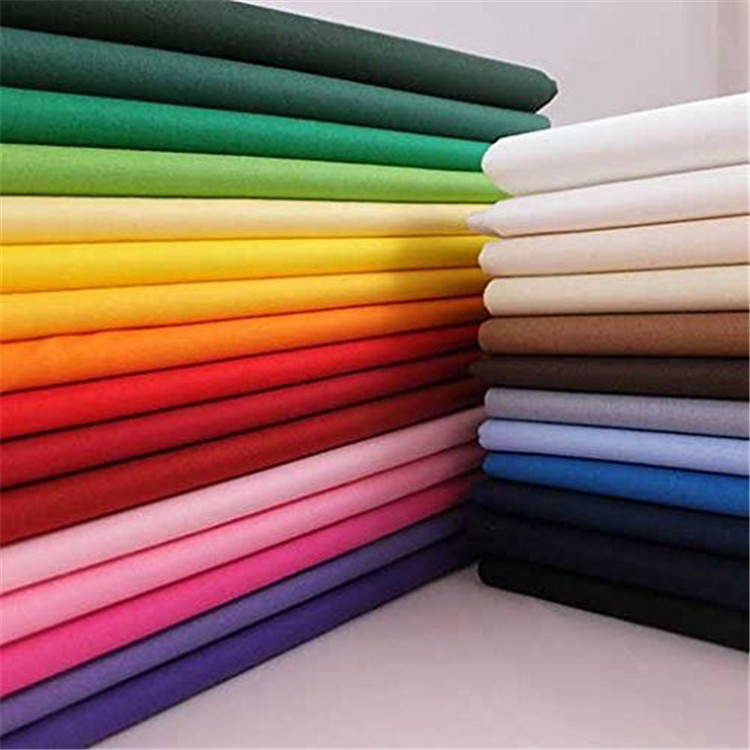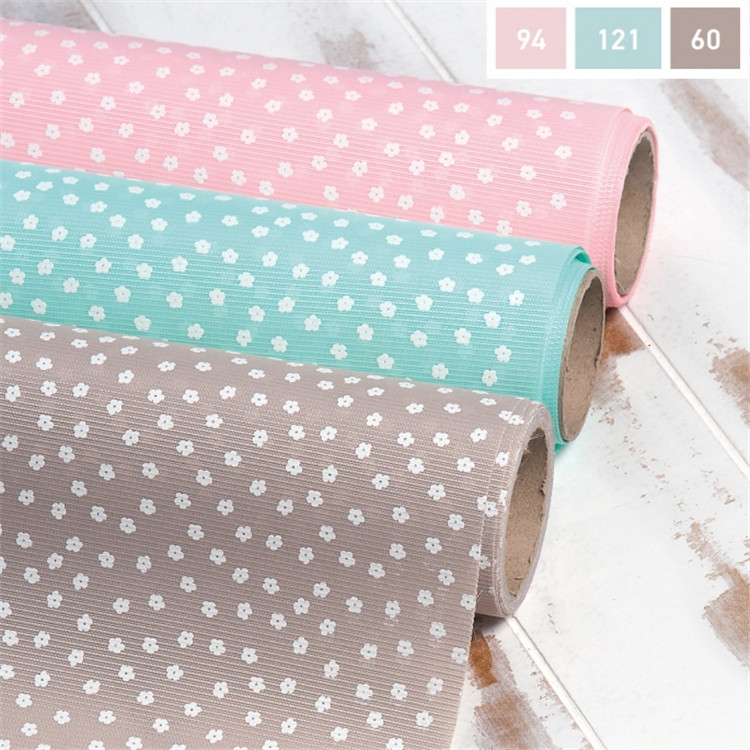-
Sheet fabric introduction and bed sheet buying tips
Postdate:2019-06-14
1, pure cotton:It has good hand feeling, comfortable use, easy dyeing, rich variety of flower type, soft and warm, strong hygroscopicity, washable, and less static electricity. It is widely used in bedding. 2, yarn-dyed cotton:One kind of cotton fabric is woven with warp and weft yarns of different colors. Because of dyeing and weaving first, the dye has strong penetrability and good dyeing fastness, and the three-dimensional sense of the different color yarn fabric is strong and the style is unique. Most of the products are in the shape of a strip, which has the characteristics of pure cotton fabric.3, high-density high-density jacquard cotton:The warp and weft density of the fabric is particularly large, and the weaving method is rich in change. Therefore, the fabric has a thick hand feel, good durability, and a high surface finish. Most of the fabrics are light-colored and elegant, and are particularly high-grade in cotton fabrics.4, polyester cotton:Brand products generally use 65% polyester, 35% cotton ratio polyester/cotton fabric. Polyester cotton is divided into plain and twill. The plain polyester cotton fabric is thin, the strength and wear resistance are very good, and the shrinkage rate is very small. The appearance of the product is not easy to sample, and the price is affordable, and the durability is good.
2, yarn-dyed cotton:One kind of cotton fabric is woven with warp and weft yarns of different colors. Because of dyeing and weaving first, the dye has strong penetrability and good dyeing fastness, and the three-dimensional sense of the different color yarn fabric is strong and the style is unique. Most of the products are in the shape of a strip, which has the characteristics of pure cotton fabric.3, high-density high-density jacquard cotton:The warp and weft density of the fabric is particularly large, and the weaving method is rich in change. Therefore, the fabric has a thick hand feel, good durability, and a high surface finish. Most of the fabrics are light-colored and elegant, and are particularly high-grade in cotton fabrics.4, polyester cotton:Brand products generally use 65% polyester, 35% cotton ratio polyester/cotton fabric. Polyester cotton is divided into plain and twill. The plain polyester cotton fabric is thin, the strength and wear resistance are very good, and the shrinkage rate is very small. The appearance of the product is not easy to sample, and the price is affordable, and the durability is good. 5, silk:Gorgeous and rich in appearance, with natural soft light and sparkling effect, it feels comfortable, high strength, elasticity and moisture absorption better than cotton.Bed linen purchase:
5, silk:Gorgeous and rich in appearance, with natural soft light and sparkling effect, it feels comfortable, high strength, elasticity and moisture absorption better than cotton.Bed linen purchase:.jpg) First, look at printing and dyeingNowadays, the printing and dyeing process is becoming more and more mature, and the variety of bedding products is becoming more and more abundant. However, any kind of dyeing material will bring different degrees of pollution to the human body and the environment, so there is one more safety guarantee for the printing and dyeing process of the bedding fabric. In addition, dark fabrics have a long dyeing time and are highly damaging to the fibers, so they are not as durable as light colors.From the perspective of safety and environmental protection, plain fabrics > light fabrics > dark fabrics, as well as underwear. In addition, fabric processing plants generally produce light-colored fabrics with the finest quality fabrics, because the quality standards of light-colored fabrics are more stringent, and it is easy to find them when they are flawed, and dyeing or printing can cover these flaws to varying degrees.Second, look at the materialBecause the bedding is in direct contact with the body, 100% natural fiber fabric or fabric with a higher proportion of natural fiber is the main choice. The bedding made of natural fiber has good affinity with human skin, moisture absorption, good ventilation, safety, comfort and no irritation.Third, look at the densityDensity is one of the important indicators for measuring the quality of fabrics, which is often overlooked by domestic consumers. The bedding products sold in foreign shopping malls are basically marked with the number of indicators representing the density of the fabric. The number of roots indicated in foreign bedding indicates the sum of the radial and latitudinal densities of the fabric, which is the sum of the number of warp and weft arrangements per square inch of fabric. The density of fabrics sold in the domestic market is usually 120-200, which is relatively thin, reaching 300. It is called high-density and high-density in China; the density of mid-range fabrics for general exports is 250-400, and that for medium-to-high-grade fabrics is 400. Above, even up to 1600. The density of the fabric has an important influence on the quality, fastness, hand feeling, and air permeability and cost of the fabric. The higher the density, the better the skin feel of the fabric, the softer the feeling, the easier it is to sleep.Fourth, look at the fabric processIn general, satin fabrics work best, jacquard fabrics are more upscale, and printed fabrics are more fancy.Fifth, see the sewing processThe stitch code is even, the needle is smooth, thin and fine.In addition, it is also necessary to emphasize the shrinkage rate of bedding. After the woven fabric is woven into a cloth, there will be some gaps even if it is arranged closely. The fabric will generally shrink after washing and soaking. For example, the cotton fiber will expand after absorbing water, and the lateral expansion will be vertical. Shortened, resulting in shrinkage. Generally, the higher the density of the fabric, the less likely it is to shrink and deform.
First, look at printing and dyeingNowadays, the printing and dyeing process is becoming more and more mature, and the variety of bedding products is becoming more and more abundant. However, any kind of dyeing material will bring different degrees of pollution to the human body and the environment, so there is one more safety guarantee for the printing and dyeing process of the bedding fabric. In addition, dark fabrics have a long dyeing time and are highly damaging to the fibers, so they are not as durable as light colors.From the perspective of safety and environmental protection, plain fabrics > light fabrics > dark fabrics, as well as underwear. In addition, fabric processing plants generally produce light-colored fabrics with the finest quality fabrics, because the quality standards of light-colored fabrics are more stringent, and it is easy to find them when they are flawed, and dyeing or printing can cover these flaws to varying degrees.Second, look at the materialBecause the bedding is in direct contact with the body, 100% natural fiber fabric or fabric with a higher proportion of natural fiber is the main choice. The bedding made of natural fiber has good affinity with human skin, moisture absorption, good ventilation, safety, comfort and no irritation.Third, look at the densityDensity is one of the important indicators for measuring the quality of fabrics, which is often overlooked by domestic consumers. The bedding products sold in foreign shopping malls are basically marked with the number of indicators representing the density of the fabric. The number of roots indicated in foreign bedding indicates the sum of the radial and latitudinal densities of the fabric, which is the sum of the number of warp and weft arrangements per square inch of fabric. The density of fabrics sold in the domestic market is usually 120-200, which is relatively thin, reaching 300. It is called high-density and high-density in China; the density of mid-range fabrics for general exports is 250-400, and that for medium-to-high-grade fabrics is 400. Above, even up to 1600. The density of the fabric has an important influence on the quality, fastness, hand feeling, and air permeability and cost of the fabric. The higher the density, the better the skin feel of the fabric, the softer the feeling, the easier it is to sleep.Fourth, look at the fabric processIn general, satin fabrics work best, jacquard fabrics are more upscale, and printed fabrics are more fancy.Fifth, see the sewing processThe stitch code is even, the needle is smooth, thin and fine.In addition, it is also necessary to emphasize the shrinkage rate of bedding. After the woven fabric is woven into a cloth, there will be some gaps even if it is arranged closely. The fabric will generally shrink after washing and soaking. For example, the cotton fiber will expand after absorbing water, and the lateral expansion will be vertical. Shortened, resulting in shrinkage. Generally, the higher the density of the fabric, the less likely it is to shrink and deform.
- 0086 0311 85206198
- panny@runfengtextile.com

